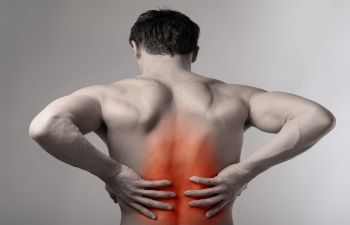Adult Scoliosis Treatment Options

The National Scoliosis Foundation estimates that close to seven million people in the United States live with this disease. When faced with scoliosis, patients have a lot of questions. Their first one is usually how they can get it fixed. While it’s rarely possible to completely correct the unnatural curvature of the spine, treatment options slow down its progression to prevent additional health problems.
What is Scoliosis?
Your spine has a natural forward and backward curve called kyphosis and lordosis. When looking at your spine from the side, you can see this curve represented as an inward curve at your lower back and an outward curve at your upper back. While looking at your spine from the back, your spine should be straight. Scoliosis is a condition where your spine does not appear straight. Instead, it may appear as an “S” or a “C” shape.
What Causes Scoliosis in Adults?
There are several causes of scoliosis in adults. For some, it was present even in childhood, whether it was diagnosed or not, and could have been genetic. Other forms may develop later, caused by injury, age, pre-existing conditions and other factors. The type of condition will affect how it progresses and how quickly. Understanding the cause is vital to providing the best adult scoliosis treatment options.
Why Is Treatment Necessary?
One of the most common health issues caused by worsening scoliosis is organ damage caused by the chest and abdomen being compressed. This organ damage can look different for every patient, causing various symptoms and requiring additional care. The damage is usually irreversible, so it is essential to create a treatment plan to slow down the disease.
How is Adult Scoliosis Treated?
Adult scoliosis treatment options will vary depending on the type of scoliosis and its severity. Your spine specialist will use imaging and perform a thorough examination of your back to decide the best course of action. Both surgical and non-surgical options may be available to you.
Non-Surgical Treatments
Most patients will receive some non-surgical treatment for scoliosis. Non-surgical treatments might be all that’s necessary for you, based on your body’s reaction to the various therapies available.
- Pain Management: Because scoliosis is often painful, your spine specialist may provide oral pain medication or steroid injections to help manage it. They might also refer you to a pain management specialist who can help you manage chronic pain over time and provide more options.
- Back Braces: Specialized braces designed to treat scoliosis may help to support your spine. Custom-fitted braces could be worn full-time or only at night. Universal braces may also be prescribed.
- Physical Therapy: Depending on the severity of your condition, physical therapy may aim to help you keep the muscles supporting your spine as strong as possible, to help you better manage pain, or you may be learning how to perform daily activities with your disability.
Scoliosis Surgery
In some cases, surgery is needed to help relieve pain, increase mobility or decrease health risks. Not every patient will benefit from spinal surgery. The decision will be made based on several factors, such as the type of scoliosis, the patient’s general health, quality of life and continued health risks. If scoliosis surgery is recommended, your team can prepare you for what to expect and answer any questions you may have about the process.
If you have been diagnosed with scoliosis, it’s important to understand the disease, how it progresses and how you can manage it. Adult scoliosis treatment options are available, and the spine specialist team at DOCS Health can work with you to create a personalized plan. Call us at (424) 800-3627 today to schedule an appointment.
Posted on behalf of
8436 W. 3rd St, Suite 800
Los Angeles, CA 90048
Phone: (424) 800-3627
Email: info@docshealth.com
Monday – Friday
8:00 AM – 5:00 PM
